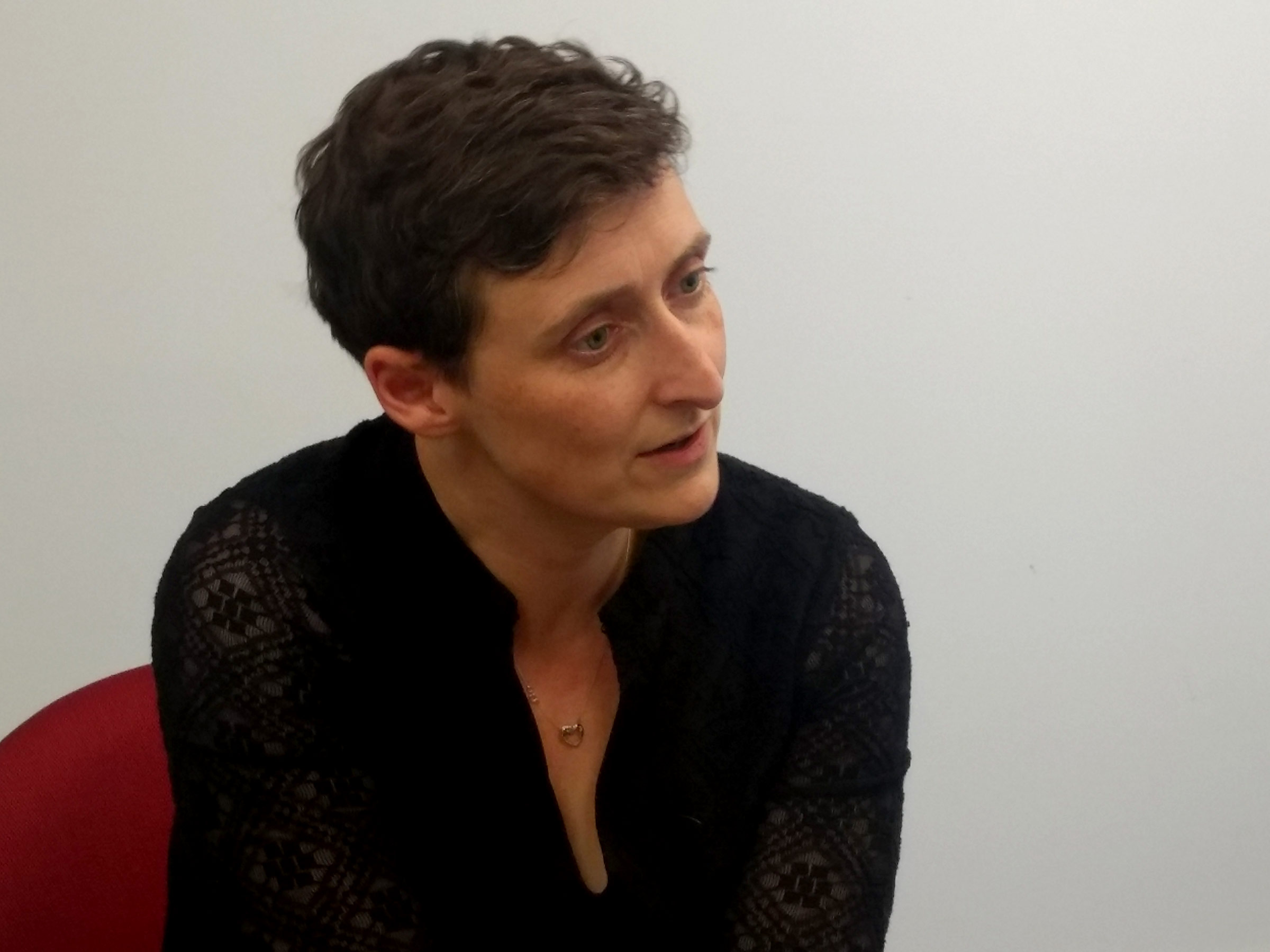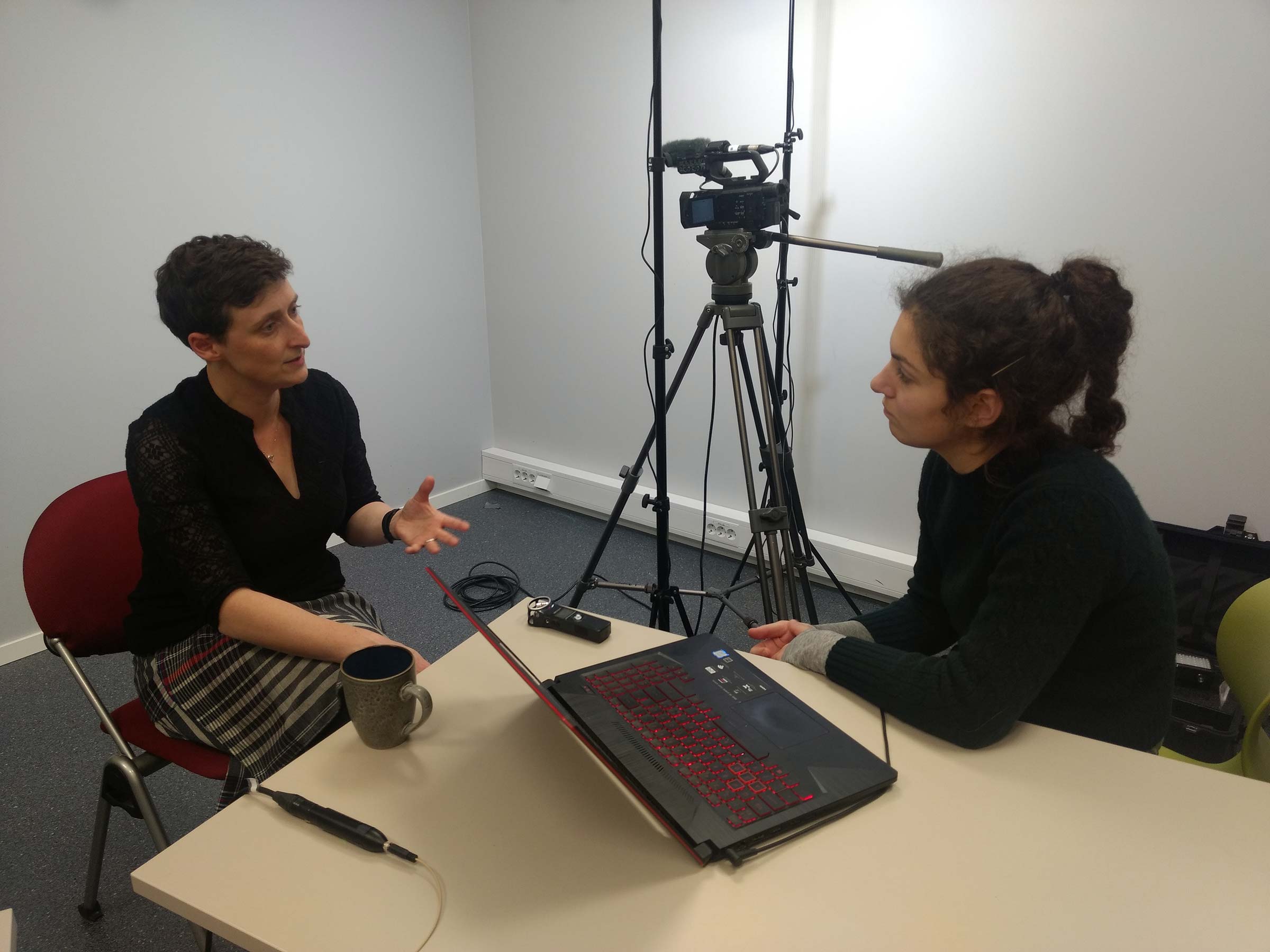An Interview with Liz Dobson
What is your background?
I went to University of Wales Bangor and studied music, a traditional BMus music degree (and MA), which involved composition, conduction and performing. By the time I came into my postgraduate I was working with film and music technology, composing, conducting, performing viola in local orchestras and recording concerts. In 1998 I took a job at Scarborough College (York University), teaching sound recording and music technology. I was inspired by education and enjoyed access to these amazing studios. It was the perfect combination because I was free to pursue my interest in music technology as well as this new interest in teaching and learning.

Your WoNoMute presentation had many social psychological aspects of your research, how did this become part of your education?
I noticed some things around interaction that I found really fascinating and wanted to look at them more closely but I did not have that training in my background. I approached the Open University to do my PhD, looking at collaborative creativity and the academic staff asked me to do some training in social sciences and education action research. I studied a postgraduate module in social sciences at Portsmouth University, and an postgraduate module in Education Action Research with the OU. Looking back, if I would have realized the huge amount of knowledge I needed to gain even at that point, I’m not sure I would have done it, however, my ignorance led me into doing it anyway. I explored different areas of social psychology and also various methodologies such as Sociocultural theory under the guidance of three amazing supervisors, Professor Dorothy Miell, Professor Karen Littleton and Professor Rosie Flewitt. They were all experts in various different ways in talk, collaborative creativity and also in multimodality. I was very lucky to have such a brilliant team to guiding me through a really what turned out to be a long process of re-training. It certainly stretched me, but I’m a much more competent academic than I ever would have been without it for sure.

What brought you into the field of music technology?
In a sense an early fascination with lights and buttons in recording studios. Really, an interest in manipulating sound with whatever medium, with whatever technology that makes and record, explores sound.
What are your experiences being a woman in music technology?
My experience is being entirely in an academic context in which I was often the only woman except for one or two years. Being very conscious that there are very few female undergraduates or postgraduates in the field I wouldn’t say I’ve had positive or negative experiences as a result of that. I don’t think I ever experienced explicit sexual discrimination in studio environments personally, but I have visited studio environments and felt unsafe. By listening to women and girls talk about their experiences I realise the impact and scale of discrimination, harassment, sexism and feel ashamed to not have done something to address the situation sooner. But today I celebrate so many efforts to improve equity in the audio industries, especially around gender but also ethnicity and disability; so my current experience as a woman in music technology is one of kinship, shared purpose, and privilege due to meeting so many inspiring, knowledgable, and more diverse people working in and around audio.
Did you have a role model?
When I was at the university, the internet did not exist, so I wasn’t aware of any women working with technology, not for many years. I had academic mentors, often in other disciplines who I could talk to about teaching and learning, but in terms of music technology, not really [laughing]. Today, my role models are activists, not only in music technology but working for social equity and taking positive often radical action for change. I won’t name them individually as I actually don’t think that would be appreciated.
Would you like to introduce more closely what you are working on at the moment?
I’m working on two things at the moment, one of them is a new piece for violin and modular synth with violinist Irine Røsnes, which uses the ctrl Eurorack Module and Max objects provided by Delta Sound Labs, explained in detail here. I’m exploring the possibility of converting pitch to control voltage, to control parameters on a modular synth. I have been writing new music exploring this with the violin while on residency at Q-02, Irine and I are developing the material collaboratively in 2020.
The other new project that I’m working on at the moment is social research looking at confidence and engagement in music technology amongst young girls of between 11 and 13 years. I’m adopting a social semiotic multimodal perspective in order to understand how particular modes of interaction are resourcing meaning-making and agency in music technology, with particular focus on understanding markers of confidence, the situations that lead them to become more confidently engaged in their use of technology.
Can you explain the technologies you use when working with the violin modular synth?
My synth is a 6U 126 hp size Eurorack, which is built around an intention to work with oscillators controlled by a violin. Delta Sound Labs sent me a couple of Max objects, Helmholtz and Envelope, and they enable me to capture the audio, identify a stable frequency and convert it to control voltage (CV) which is then sent to the synth via the Delta Sound Labs ctrl module. I also use an ExpertSleepers module to carry audio back to my MOTU via the laptop. When I play a sound on the violin, let’s say an A, those oscillators play what ever frequency I’ve tuned them to. So I can pitch match or explore clusters. I also wanted to start changing the parameters in Max/MSP; if I play any frequency below 440 Hz the Max patch is set up to only send signal to two of the CV outputs. Above 440 Hz but below 659 Hz (open E string), and above 659 Hz different CV outputs are activated, and this way the violin signal is spread across different oscillators on the synth. If I play an open G the Max patch is set up to configure all CV outputs to all oscillators, and when I play a really high note like an A harmonic on the A string the patch splits the signal as I have explained. I find it interesting to explore how an acoustic violin can incorporate these changes into a performance. I do have a volume control on the microphone pick up for now, which means that I can control when signal is going through the software and stop it controlling the patch all together. This means it can carry on doing what it is doing and the violinist can move around that. That is quite fun. By tapping the violin and creating a sudden sharp noise it can trigger a gate, set up to trigger freeze on Clouds (a granular synth Eurorack module). There is a lot to explore and then there is a difference between composing and exploring. For now I’m mostly exploring.
What advice would you give to women interested in pursuing a career in music technology?
The situation now is far better but many problems do clearly still persist. I would suggest finding some mentors (of any identity really), but maybe people who understand where you are coming from in terms of your background and experiences. You can do that via networks like WoNoMute or the Yorkshire Sound Women Network. There are many collectives and communities now. Get access as many people and as much kit as you can and take some risks, once you find someone you feel safe to take those risks with. Because that is the avenue to learning - you have to make mistakes, but it has to be done in a way in which you feel comfortable with to take them. Community is really important as this will help you share work, ask the questions you feel most vulnerable asking and set goals. We have to know where we are going in order to get there.
Do you have a final comment?
In terms of gender and inclusion in audio, DAW democracy alone isn’t enough (I’m thinking of Patrick Bell’s publication) – we all need community, allies, capital, and access. Most importantly though, we need an intersectional feminist perspective; just as women are being supported now, to realise how women of colour, and women with disabilities face further a matrix of discrimination. Let’s not regard the problem of gender equity to be solved until these industries are bursting with a fully diverse community of women, otherwise, while celebrating our accomplishments in gender diversity we actually mask historic disadvantages and oppressions further.
